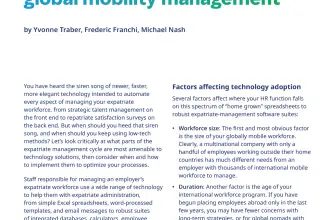Learn about the rules and regulations employers should follow when implementing fire and rehire practices in this comprehensive guide
In recent years, the practice of “fire and rehire” has become increasingly common among employers, particularly in the UK. The term “fire and rehire” refers to the process by which an employer fires their employees and then rehires them on revised terms and conditions.
This practice has been widely condemned by trade unions, worker advocates, and others who claim it is unfair and can result in a variety of negative consequences for workers.
Despite these concerns, fire and rehire are legal in many jurisdictions, including the UK, and employers have the right to use this strategy to restructure their workforce or cut costs.
There are rules and regulations that employers must follow when implementing fire and rehire. In contrast, failure to comply with these rules can result in legal action and other consequences.
This article will provide a detailed guide for employers on fire and rehire rules. We will review the legal framework governing this practice, the requirements that employers must meet when implementing “fire and rehire,” and the potential risks and benefits of using this strategy.
Legal Framework for Fire and Rehire

The permissibility of fire and rehire practices depends on the legal framework in the employer’s jurisdiction. In the UK, for example, firing and rehiring is not prohibited by law, but there are rules and regulations that employers must follow.
1. Employment Contracts
Employers must comply with the terms of their employment contracts when implementing these practices. If an employee has a contract that guarantees certain terms and conditions, the employer cannot change these without the employee’s agreement.
2. Legal Notice
Employers must give employees the appropriate legal notice before terminating their employment. This notice period may vary depending on the jurisdiction and the length of the employee’s service.
3. Unfair Dismissal
Employers must comply with unfair dismissal laws when implementing fire and rehire practices. This may include providing employees with a valid reason for their dismissal, following a fair procedure, and demonstrating that the dismissal was reasonable in the circumstances.
4. Discrimination
Employers must comply with discrimination laws when implementing fire and rehire practices. This may include ensuring that the revised terms and conditions do not discriminate against employees based on their age, gender, race, or other protected characteristic.
In general, employers must make sure that firing and rehiring practices are morally and legally acceptable. They must act in good faith, follow contractual obligations, and comply with relevant laws and regulations. Failure to do so can result in significant legal and reputational risks.
Requirements for Implementing Fire and Rehire
In order to implement “fire and rehire” practices, employers must follow certain requirements and procedures.
Employers must have a legitimate business reason for implementing fire and rehire. This could include the need to cut costs, restructure the workforce, or respond to changes in market conditions.
Employers must show that their use of “fire and rehire” is a reasonable and necessary response to these business needs.
Employers must engage in consultation with their employees before implementing fire and rehire. This may include providing employees with notice of the proposed changes, explaining the reasons for the changes, and seeking feedback from employees.
The level of consultation required may vary depending on the jurisdiction and the number of employees affected.
Employers must provide their employees with a clear and reasonable timeframe for accepting the revised terms and conditions. This may include providing employees with a deadline for accepting the new terms or allowing them a reasonable period of time to consider the offer.
Employers must ensure that the revised terms and conditions are fair and reasonable.
This may include ensuring that the new terms comply with any relevant employment laws and regulations, providing employees with adequate notice of any changes, and offering employees compensation or other incentives to accept the new terms.
Potential Risks For Employers of Using Fire and Rehire
While fire and rehire practice can be useful for employers in certain circumstances, it also carries significant risks. These risks may include legal, reputational, and financial consequences.
One of the primary risks of using fire and rehiring is legal action. If an employer fails to follow the proper procedures and requirements when implementing this strategy, they may be subject to legal action from their employees.
This may include claims of unfair dismissal, discrimination, or breach of contract. Legal action can be costly and time-consuming and may damage the employer’s reputation.
The use of fire and rehire may also damage the employer’s reputation in the eyes of their employees, customers, and the wider public.
A damaged reputation can lead to a loss of business and difficulty in attracting and retaining talent.
The use of fire and rehire may also have financial consequences for employers. This may include the cost of legal action, compensation payments to employees, and the cost of recruiting and training new employees.
Employers must carefully consider the potential risks of using fire and rehire practices. They must ensure that they follow the proper procedures and requirements and that they act in good faith and with a legitimate business reason.
Alternatives to Fire and Rehire
Employers should consider alternatives to fire and rehire practices before implementing this strategy. These alternatives may be more ethical, cost-effective, and less risky for the employer.
One alternative to fire and rehiring is to negotiate with employees and their representatives. This may include negotiating changes to terms and conditions, incentivising employees to accept changes, or exploring alternatives to redundancies such as reduced hours or job sharing.
Negotiation can help to build trust and maintain good relations between employers and their employees.
Another alternative to fire and rehiring is to implement a voluntary resignation scheme. This may include offering employees a financial incentive to voluntarily leave their jobs rather than forcing them to accept revised terms and conditions.
These schemes can be more ethical and less risky for employers, as they avoid the potential for legal action and reputational damage associated with firing and rehiring.
Employers may also consider implementing a temporary pay cut or reduction in hours. This can help reduce costs without requiring employees to change their terms and conditions permanently. Temporary measures can be reviewed and adjusted as the business situation changes.
Employers should consider alternatives to fire and rehire practices before implementing this strategy. They must carefully evaluate their options and choose the most appropriate approach for their business needs and the needs of their employees.
Best Practices for Implementing Fire and Rehire

If employers decide to use fire and rehire practices, they should follow best practices to minimise the risks and ensure that the process is fair and transparent. Some best practices for implementing fire and rehire include the following:
1. Consultation
Employers should engage in consultation with affected employees and their representatives before implementing fire and rehire practices. This can help build trust, ensure that employees understand the reasons for the changes, and identify potential issues or concerns.
2. Communication
Employers should communicate clearly and transparently with employees about the proposed changes, including the reasons for the changes, the impact on employees, and any support that will be provided.
Communication should be ongoing throughout the process to ensure that employees are fully informed and can make informed decisions.
3. Fairness
Employers should ensure that the process is fair and transparent and that employees are given a reasonable opportunity to consider and respond to the proposed changes.
This may include providing employees with written notice of the proposed changes, holding meetings to discuss the changes, and allowing employees to seek independent advice.
4. Alternatives
Employers should consider alternatives to fire and rehire practices before implementing this strategy. This may include negotiation, voluntary redundancy, or temporary measures such as pay cuts or reduced hours.
5. Legal Compliance
Employers should ensure that they comply with all relevant laws and regulations when implementing fire and rehire practices.
This may include compliance with employment contracts, providing statutory notice, complying with unfair dismissal and discrimination laws, and engaging in collective bargaining where required.
Employers should follow best practices when implementing fire and rehire practices. This can minimise the risks and ensure that the process is fair and transparent for all employees. Employers must also carefully evaluate their options and seek legal advice before implementing fire and rehire practices.
Employee Rights and Protections

Employees have rights and protections when facing fire and rehire practices. Employers must comply with these rights and protections to ensure that the process is fair and transparent.
Some of the employee rights and protections include:
Right to Consultation
Employees have the right to be consulted before any changes to their terms and conditions are implemented. Employers must engage in meaningful consultation with affected employees and their representatives.
Right to Notice
Employees have the right to receive written notice of any proposed changes to their terms and conditions. The notice should include details of the proposed changes, the reasons for the changes, and the impact on the employee.
Right to Object
Employees have the right to object to the proposed changes if they believe that the changes are unfair or unreasonable. Employers must consider any objections and respond in a reasonable and timely manner.
Protection from Unfair Dismissal
Employees are protected from unfair dismissal under the law. Employers must comply with unfair dismissal laws when implementing fire and rehire practices.
Protection from Discrimination
Employees are protected from discrimination under the law. Employers must ensure that the revised terms and conditions do not discriminate against employees based on their age, gender, race, or other protected characteristic.
Right to Seek Advice
Employees have the right to seek independent advice from a trade union or other representative, a lawyer, or an employment advice service. Employers must allow employees reasonable time off work to seek this advice.
Employees possess these rights and protections when facing fire and rehire practices. Employers must comply with these rights and protections to ensure that the process is fair and transparent.
Risks of Implementing Fire and Rehire Practices Without Consultation
The risks of implementing fire and rehire practices without proper consultation include legal action for unfair dismissal, discrimination, or breach of contract.
In such cases, employees can take legal action to challenge the employer’s decision and seek compensation for damages. Employers should consult with employees and their representatives before implementing changes to terms and conditions of employment to avoid legal risks and maintain good employee relations.
How Can Employers Communicate During the Fire and Rehire Process?
Employers can communicate effectively with employees during the fire and rehire process by providing clear and concise information about the changes to terms and conditions of employment, the reasons for the changes, and the options available to affected employees.
Should Employers Use Fire and Rehire Practices?
Fire and rehire practices should only be used as a last resort after carefully considering all available options. Employers should prioritise building positive and collaborative relationships with their employees and representatives.
This helps create a more productive and engaged workforce, which is essential for the success of any business.
While following this process, ensure that you provide a complete protocol to your employee. So, in future, they don’t claim legal rights. Further, it would be better to inform the employees so that they can manage their job and not get a sudden break in income.
Conclusion
The “fire and rehire” practice is a controversial strategy that has attracted significant media attention and political debate in recent years.
While employers may see this as necessary to cut costs and remain competitive, employees and their representatives view it as an unfair and aggressive approach that undermines workers’ rights.
Fire and rehire practices should be used as a last resort only after carefully considering all available options. Employers should prioritise building positive and collaborative relationships with their employees and representatives.
This helps create a more productive and engaged workforce, which is essential for the success of any business.









